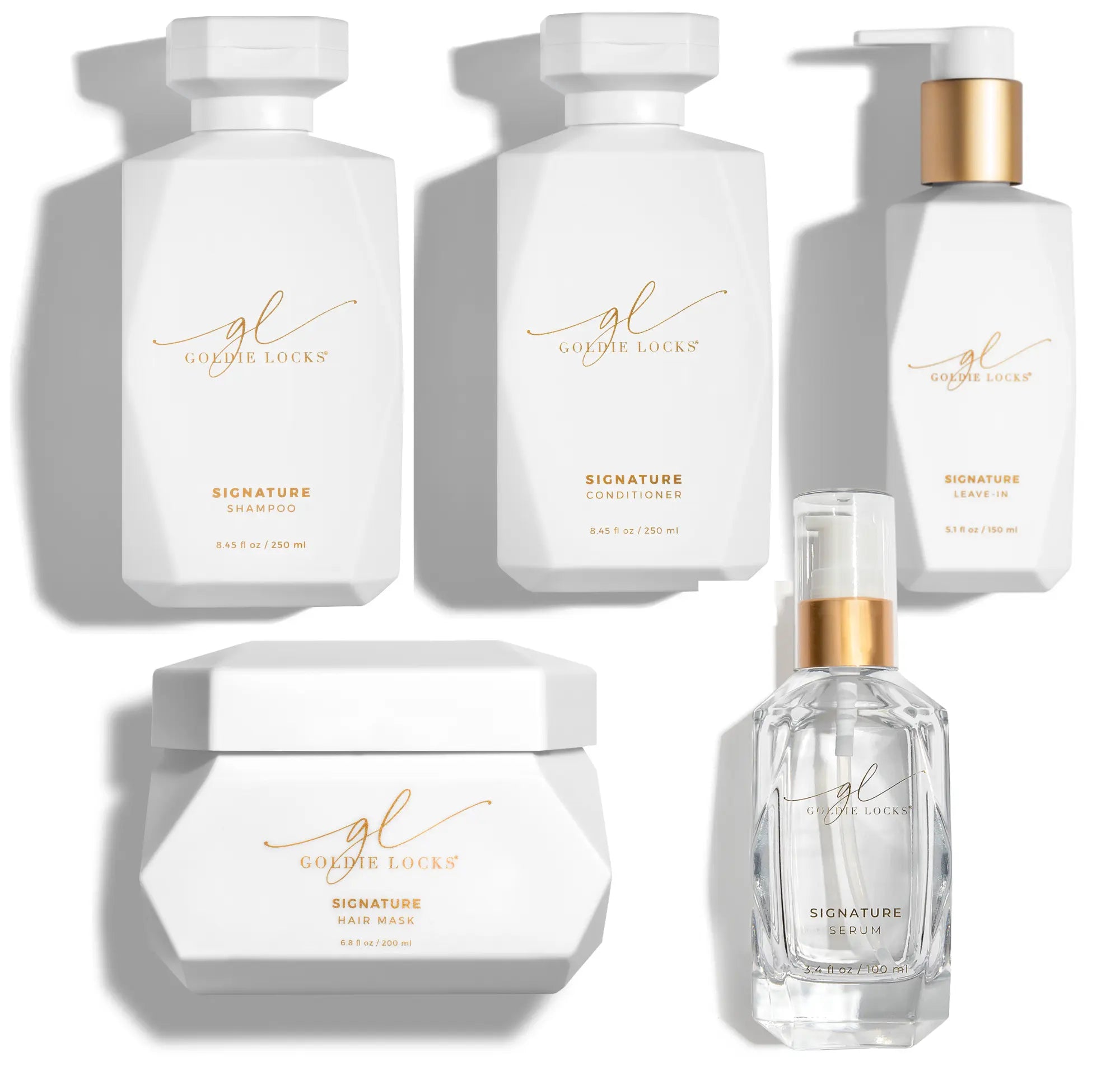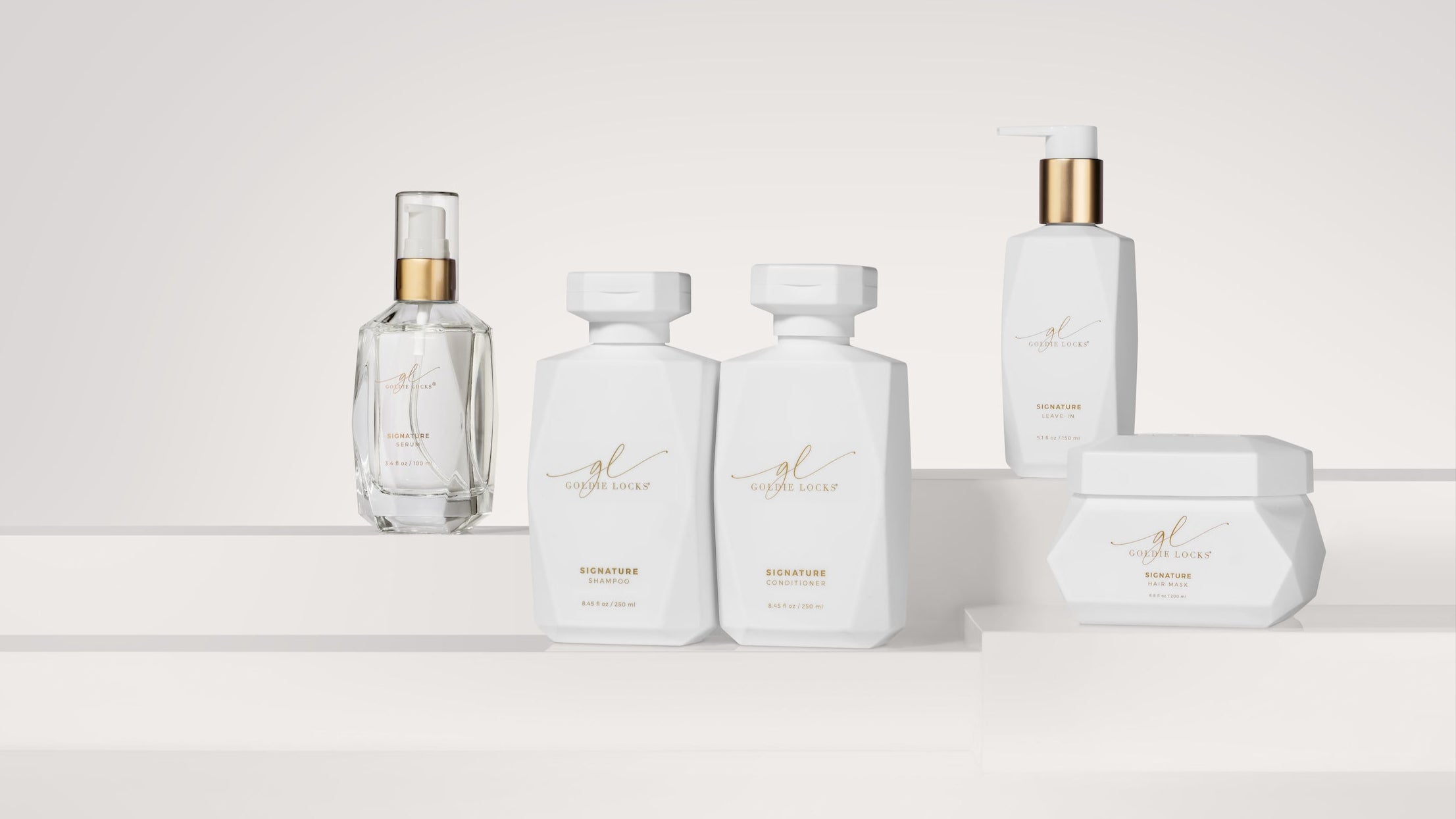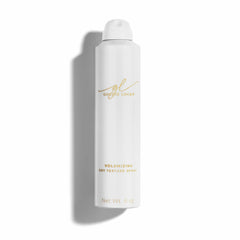There are many signs that your hair may be stressed or damaged, from excessive shedding and breakage to dullness and unwanted brassiness. Everyday habits like brushing, exposure to UV rays, frequent heat styling, or chemical treatments can all take a toll on your hair over time.
The good news is that with care and consistency, it’s possible to restore your hair’s health. Targeted treatments and thoughtful adjustments to your routine can make a meaningful difference, depending on the root cause of the damage.
In the sections ahead, you’ll learn how to recognize the signs of damaged hair, understand the most common causes, and explore gentle yet effective ways to repair and protect your strands for the long term.
Index
What Is Damaged Hair?

Hair damage is often the result of everyday aggressors: heat, friction, and harsh chemicals. These stressors weaken the hair’s protective outer layer, the cuticle, causing it to lift or crack and leaving the inner structure more vulnerable.
Over time, repeated exposure can leave hair looking dull, frizzy, and dry, and significantly more prone to breakage.
The encouraging news is that damaged hair can be improved. By adjusting your routine and giving your strands the care they need, you can begin to reduce visible damage and support the repair of weakened bonds from within.
How to Know If Your Hair Is Damaged

Damaged hair often reveals itself through several common signs, including:
-
Excessive Breakage
Hair snaps easily when brushing or styling, especially when wet. -
Split Ends
Strands fray or split at the tips, often appearing feathered or uneven. -
Rough or Dry Texture
Hair feels coarse, straw-like, or brittle to the touch. -
Dull Appearance
Lacks natural shine or looks lifeless and flat. -
Frizz and Flyaways
Persistent frizz, even in low humidity, can indicate a compromised cuticle. -
Inability to Hold Moisture
Hair dries out quickly after washing or conditioning. -
Tangles Easily
Strands catch and knot, making detangling difficult and causing more breakage. -
Color Fading or Brassiness
Dyed hair loses vibrancy quickly or turns brassy, especially after sun or heat exposure. -
Elasticity Loss
When stretched, hair doesn’t bounce back and may break instead. -
Scalp Issues
Dry, flaky, or irritated scalp can sometimes accompany damaged strands.
Expert Insight:
“One big red flag I look for is a singed or crinkled look to the hair, almost like a zig-zag pattern. This is often a sign of heat damage, typically from a blow dryer that’s gotten too hot. And the surprising cause? A clogged dryer filter. When your blow dryer isn’t cleaned regularly, it overheats, blasting your hair with more heat than intended and causing that brittle, damaged look.” - Erin Caltabiano
Common Causes of Hair Damage
Heat Damaged Hair

When hair is exposed to temperatures above 300°F, the natural alpha-keratin converts to beta-keratin. This change weakens the hair, causing a loss of elasticity and making it more prone to damage. Frequent use of flat irons, curling wands, and blow dryers can break down the protein structure and strip away essential moisture, leaving strands dry and fragile.
Sun Damaged Hair

Just like your skin, hair is vulnerable to prolonged exposure to the sun’s UV rays. UVA and UVB rays can damage the hair cuticle, leading to dryness, color fading, and brittleness. Sun damage often results in dry, frizzy strands, discoloration, thinning, and split or broken ends.
Chlorine Damaged Hair

Chlorine, a powerful disinfectant used in swimming pools, can strip your hair of its natural oils, the very oils that protect and hydrate your strands. Without this moisture barrier, hair becomes dry, brittle, and more susceptible to breakage.
Bleach or Dye Damaged Hair

Bleaching removes your natural hair color by swelling the hair shaft and dissolving the melanin pigment inside. This process leaves hair porous, dry, brittle, and fragile. The permanent structural changes weaken the hair, reducing its strength and elasticity.
Similarly, chemical dyes can strip natural moisture from hair, turning smooth strands coarse and more vulnerable to damage.
Other Factors that can Damage Hair:
- Over-Washing or Harsh Shampoo: Washing hair too often, especially with sulfates or clarifying shampoos, can strip away natural oils that protect and hydrate.
- Friction: Rough towel drying, tight hairstyles, or sleeping on cotton pillowcases can create mechanical wear and tear on the hair cuticle, leading to damage over time.
- Environmental Factors: Wind, humidity, pollution, and hard water can all contribute to gradual damage.
- Imbalance of Moisture and Protein: Hair that is either too dry or overloaded with protein can become stiff, brittle, and more susceptible to breakage.
- Improper Detangling or Brushing: Using harsh tools or brushing too aggressively, especially when hair is wet, can cause breakage and split ends.
Expert Insight:
“One of the most common mistakes that leads to damage is applying products the wrong way. It might not sound like a big deal, but hear me out: if you’re slapping conditioner just on the top of your head instead of working it through in sections and brushing it through, you’re missing the moisture your hair actually needs. Same goes for thermal protectant, if it’s not evenly applied and you go in with high heat, you’re not protecting the full strand, which leaves parts of your hair vulnerable to damage. How you apply your products is just as important as what you use.” - Erin Caltabiano
Can Damaged Hair Be Repaired?

While damaged hair can’t be fully “repaired,” you can effectively manage damage and improve your hair’s health over time. This involves targeted treatments and tailored care, depending on what’s causing the damage.
The good news is that by addressing damage early and making thoughtful changes to your routine, you’ll start to see and feel healthier hair. With consistent care, new growth will be stronger and more resilient, gradually restoring the overall vitality and appearance of your strands.
Expert Insight:
“A common mistake I notice clients make when trying to repair damage is overusing protein! They're often using shampoos, conditioners, and masks that end up making their hair feel brittle, dry, and more prone to breakage. I always recommend switching over to Goldie Locks® Signature Shampoo & Conditioner and the Signature Serum to nourish, hydrate, and replenish the hair.” - Alexa Ruddick
How to Fix Damaged Hair: Step-by-Step Repair Plan
If your hair is showing signs of stress, follow this 10-step plan to begin restoring strength, shine, and softness to your damaged strands:

1. Trim the Damage
Split ends are a clear sign of hair damage, causing strands to look dull, frizzy, and broken. Regular trims help stop split ends from worsening while preserving your hair’s length and health.

2. Use Shampoo for Damaged Hair
Choose sulfate-free, moisturizing shampoos like Goldie Locks® Signature Shampoo to cleanse without stripping natural oils. Limit washing to 2–3 times per week to prevent over-drying.

3. Apply a Hair Treatment for Damaged Hair
Deep condition 1–2 times a week with masks designed to repair internal hair bonds. Goldie Locks® Signature Hair Mask is ideal for restoring moisture and strength.

4. Keep Hair Hydrated
Use a leave-in conditioner such as Goldie Locks® Signature Leave-In Conditioner to lock in moisture, focusing on mid-lengths to ends where damage tends to concentrate.

5. Avoid Harsh Chemicals
Pause coloring, perming, or relaxing treatments while your hair recovers. If coloring is necessary, opt for gentler options like ammonia-free or semi-permanent formulas.

6. Protect Hair While You Sleep
Switch to a silk or satin pillowcase to reduce friction. Consider loosely braiding your hair or wearing a silk bonnet to prevent tangling and breakage overnight.

7. Reduce the Temperature of Styling Tools
Minimize heat styling and opt for air-drying whenever possible. When using heat, apply protective products like Goldie Locks® Blow Dry Spray to shield your hair from thermal damage.

8. Handle Wet Hair with Care
Wet hair is most vulnerable. Avoid brushing it aggressively, use a wide-tooth comb to gently detangle once hair is partially dry.

9. Swim with Care
Chlorine, saltwater, and pool chemicals can weaken hair. Always wear a swim cap for protection, and use Goldie Locks® Clarifying Shampoo to remove chlorine, iron, and mineral buildup that can cause discoloration.

10. Avoid tight Hairstyles
Tightly pulled-back styles place tension on your scalp and strands, which can lead to breakage and thinning over time. Opt for looser styles to keep hair healthy.
Prevention Tips to Avoid Future Hair Damage

Once you’ve begun repairing your hair, the next step is maintaining its health. Prevention is about cultivating everyday habits that protect your strands from stress, beyond just switching products.
Here are sustainable ways to keep your hair strong and resilient:
- Nourish From Within: Maintain a diet rich in protein, omega-3 fatty acids, and essential vitamins to support healthy hair growth.
- Stay hydrated: Drinking enough water benefits both your scalp and your strands, keeping them hydrated and vibrant.
- Use Lukewarm Water: Rinse with lukewarm or cool water to help preserve moisture and natural shine.
- Choose and Rotate Wisely: Select haircare products thoughtfully, and rotate between moisturizing, strengthening, and clarifying treatments based on your hair’s evolving needs.
- Protect Hair from the Sun: Wear a hat or apply UV-protectant hair sprays to shield your hair from harmful rays.
- Use a Microfiber Towel or Soft T-Shirt: Gently blot your hair dry with a soft cotton t-shirt or microfiber cloth to reduce friction and prevent breakage.
FAQs About Damaged Hair Repair
How to fix your hair if it is damaged?
Start by trimming split ends to prevent further breakage. Incorporate bond-repair or protein treatments to reinforce weakened strands. Minimize heat styling, avoid harsh chemical treatments, and protect your hair from UV exposure and friction to support recovery.
How do I know my hair is damaged?
Common signs of damage include split ends, breakage, dry or brittle texture, dullness, frizz, easy tangling, and faded color.
What is the best hair treatment for extremely damaged hair?
The most effective treatments combine moisture, protein, and bond repair to restore strength, softness, and resilience.
Final Thoughts
Repairing damaged hair requires time, effort, and patience. By reducing exposure to damaging factors and using targeted products tailored to your hair’s needs, you’ll be on the path to stronger, healthier, and fuller-looking hair.
Goldie Locks® hair care products are crafted to deliver thoughtful, beautiful results with every use. By following the tips above and incorporating quality care into your routine, you’ll build a foundation for lasting hair health and resilience.
























